Poly(1-vinylpyrrolidone-co-vinyl acetate)
- CAS NO.:25086-89-9
- Empirical Formula: C10H15NO3
- Molecular Weight: 197.23
- MDL number: MFCD00134018
- EINECS: 200-001-8
- SAFETY DATA SHEET (SDS)
- Update Date: 2024-12-18 14:15:30
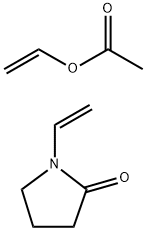
What is Poly(1-vinylpyrrolidone-co-vinyl acetate)?
Chemical properties
white powder
Chemical properties
Copovidone is a white to yellowish-white amorphous powder. It is typically spray-dried with a relatively fine particle size. It has a slight odor and a faint taste.
The Uses of Poly(1-vinylpyrrolidone-co-vinyl acetate)
Poly(1-vinylpyrrolidone-co-vinyl acetate)
The Uses of Poly(1-vinylpyrrolidone-co-vinyl acetate)
Copovidone is a water-soluble polymer used to improve the uptake and drug loading of various pharmaceutical agents, including contraceptive patches.
Production Methods
Copovidone is manufactured by free-radical polymerization of vinylpyrrolidone and vinyl acetate in a ratio of 6 : 4. The synthesis is conducted in an organic solvent owing to the insolubility of vinyl acetate in water.
General Description
~1:2.4 mole ratio of VP:VA
Pharmaceutical Applications
Copovidone is used as a tablet binder, a film-former, and as part of the matrix material used in controlled-release formulations. In tableting, copovidone can be used as a binder for direct compression and as a binder in wet granulation. Copovidone is often added to coating solutions as a film-forming agent. It provides good adhesion, elasticity, and hardness, and can be used as a moisture barrier.
Safety Profile
Moderately toxic by ingestion.Combustible, especially in powdered form. Incompatiblewith strong oxidising agents, strong reducing agents. Whenheated to decomposition it emits toxic vapors of NOx.
Safety
Copovidone is used widely in pharmaceutical formulations and is
generally regarded as nontoxic. However, it is moderately toxic by
ingestion, producing gastric disturbances. It has no irritating or
sensitizing effects on the skin. A study was conducted to look at the
carcinogenicity and chronic toxicity of copovidone (Kollidon VA
64) in Wistar rats and Beagle dogs. The results of these studies
demonstrated the absence of any significant toxicological findings
of high dietary levels of copodivone in rats and dogs, resulting in noobserved-
adverse-effect levels of 2800 mg/kg body-weight/day in
rats and 2500 mg/kg body-weight/day in dogs, the highest doses
tested.
LD50 (rat, oral): >0.63 g/kg
storage
Copovidone is stable and should be stored in a well-closed container in a cool, dry place.
Incompatibilities
Copovidone is compatible with most organic and inorganic pharmaceutical ingredients. When exposed to high water levels, copovidone may form molecular adducts with some materials; see Crospovidone and Povidone.
Regulatory Status
Copovidone is included in the FDA Inactive Ingredients Database (oral tablets, oral film-coated tablets, sustained action).
Properties of Poly(1-vinylpyrrolidone-co-vinyl acetate)
| Density | 1.27 g/mL at 25 °C(lit.) |
| refractive index | 1.4300 to 1.4380 |
| Flash point: | 72 °F |
| solubility | Greater than 10% solubility in 1,4-butanediol, glycerol,
butanol, chloroform, dichloromethane, ethanol (95%),
glycerol, methanol, polyethylene glycol 400, propan-2-ol,
propanol, propylene glycol, and water. Less than 1% solubility
in cyclohexane, diethyl ether, liquid paraffin, and pentane. |
| form | powder |
| color | White |
| Stability: | Stable. Combustible, especially in powdered form. Incompatible with strong oxidising agents, strong reducing agents. |
| InChI | InChI=1S/C6H9NO.C4H6O2/c1-2-7-5-3-4-6(7)8;1-3-6-4(2)5/h2H,1,3-5H2;3H,1H2,2H3 |
| EPA Substance Registry System | Vinyl acetate N-vinyl-pyrrolidone polymer (25086-89-9) |
Safety information for Poly(1-vinylpyrrolidone-co-vinyl acetate)
| Signal word | Danger |
| Pictogram(s) |
 Flame Flammables GHS02  Exclamation Mark Irritant GHS07 |
| GHS Hazard Statements |
H225:Flammable liquids H319:Serious eye damage/eye irritation H336:Specific target organ toxicity,single exposure; Narcotic effects |
| Precautionary Statement Codes |
P210:Keep away from heat/sparks/open flames/hot surfaces. — No smoking. P261:Avoid breathing dust/fume/gas/mist/vapours/spray. P305+P351+P338:IF IN EYES: Rinse cautiously with water for several minutes. Remove contact lenses, if present and easy to do. Continuerinsing. |
Computed Descriptors for Poly(1-vinylpyrrolidone-co-vinyl acetate)
| InChIKey | FYUWIEKAVLOHSE-UHFFFAOYSA-N |
| SMILES | C(N1CCCC1=O)=C.O(C=C)C(=O)C |
Poly(1-vinylpyrrolidone-co-vinyl acetate) manufacturer
Alcedo Pharmachem Private Limited
New Products
(S)-3-Aminobutanenitrile hydrochloride 4-Methylphenylacetic acid N-Boc-D-alaninol N-BOC-D/L-ALANINOL Tert-butyl bis(2-chloroethyl)carbamate 3-Morpholino-1-(4-nitrophenyl)-5,6-dihydropyridin- 2(1H)-one Furan-2,5-Dicarboxylic Acid Tropic acid 1-Bromo-3,5-Di-Tert-Butylbenzene S-2-CHLORO PROPIONIC ACID ETHYL ISOCYANOACETATE 2-Bromo-1,3-Bis(Dimethylamino)Trimethinium Hexafluorophosphate 4-IODO BENZOIC ACID 3-NITRO-2-METHYL ANILINE 1-(2,4-DICHLOROPHENYL) ETHANAMINE (2-Hydroxyphenyl)acetonitrile 4-Bromopyrazole 2-(Cyanocyclohexyl)acetic acid 4-methoxy-3,5-dinitropyridine 1-(4-(aminomethyl)benzyl)urea hydrochloride 2-aminopropyl benzoate hydrochloride diethyl 2-(2-((tertbutoxycarbonyl)amino) ethyl)malonate tert-butyl 4- (ureidomethyl)benzylcarbamate Ethyl-2-chloro((4-methoxyphenyl)hydrazono)acetateRelated products of tetrahydrofuran

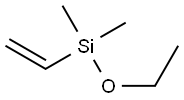
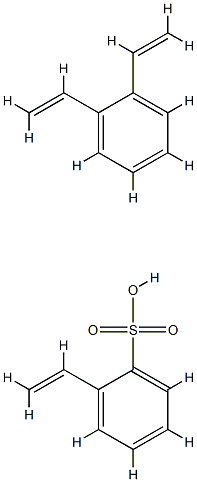


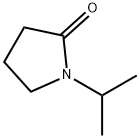
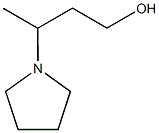

You may like
-
 25086-89-9 Vinyl acetate/N-vinyl-2-pyrrolidinone copolymer 98%View Details
25086-89-9 Vinyl acetate/N-vinyl-2-pyrrolidinone copolymer 98%View Details
25086-89-9 -
 Poly(1-vinylpyrrolidone-co-Vinyl Acetate) (Copolymer, 3:7) (50% in Ethanol) CAS 25086-89-9View Details
Poly(1-vinylpyrrolidone-co-Vinyl Acetate) (Copolymer, 3:7) (50% in Ethanol) CAS 25086-89-9View Details
25086-89-9 -
 Copovidone CAS 25086-89-9View Details
Copovidone CAS 25086-89-9View Details
25086-89-9 -
 1975-50-4 98%View Details
1975-50-4 98%View Details
1975-50-4 -
 2-HYDROXY BENZYL ALCOHOL 98%View Details
2-HYDROXY BENZYL ALCOHOL 98%View Details
90-01-7 -
 2-Chloro-1,3-Bis(Dimethylamino)Trimethinium Hexafluorophosphate 221615-75-4 98%View Details
2-Chloro-1,3-Bis(Dimethylamino)Trimethinium Hexafluorophosphate 221615-75-4 98%View Details
221615-75-4 -
 14714-50-2 (2-Hydroxyphenyl)acetonitrile 98+View Details
14714-50-2 (2-Hydroxyphenyl)acetonitrile 98+View Details
14714-50-2 -
 118753-70-1 98+View Details
118753-70-1 98+View Details
118753-70-1